Original Author: Wajahat Mughal
Original Translation: Alex Liu, Foresight News
Last year, the call for a "DeFi Renaissance" spread widely, and the DeFi sector experienced a period of revival and renewed interest.
This was led by protocols such as AAVE, Uniswap, Lido, Maker, Ethena, Morpho, and Pendle, which continued to scale and contributed a significant portion of the total value locked (TVL) in the crypto space. Previously, DeFi had just gone through its most challenging phase: the collapse of one of the largest stablecoins, UST, the bankruptcy of the leading centralized exchange FTX, and various setbacks such as hacks, exploits, and de-pegging events that plagued the DeFi sector during the last bear market. The situation has changed dramatically over the past few years, giving rise to the narrative known as the "DeFi Renaissance."
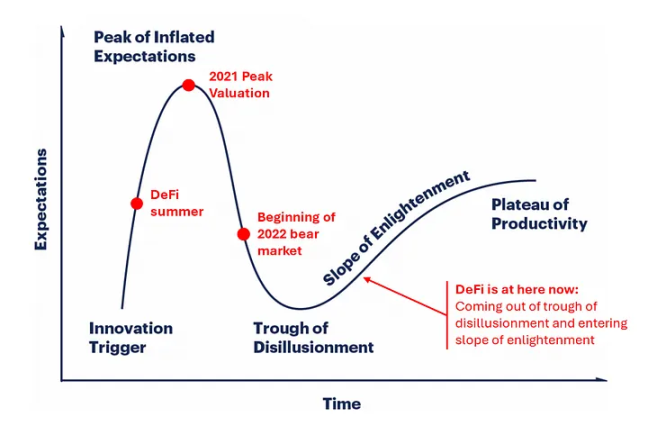
The Development History of DeFi Over the Years - Excerpted from Arthur 0x's article "DeFi Renaissance: Making DeFi Great Again"
These protocols survived the brutal bear market and continued to develop, improve, and innovate based on the decentralized exchanges (DEX), money markets, and staking areas they initially built.
There are several reasons for the revival of DeFi, including:
- Mainstream protocols have been tested in real-world scenarios: Applications have withstood multiple disasters from the last cycle, including the de-pegging of USDC, the de-pegging of stETH, the complete boom-bust cycle, and the high-yield/high-interest environment of traditional finance.
- Stronger product offerings: Whether it’s high-yield stablecoins (Ethena), DEXs with higher capital efficiency (Fluid/Uniswap V4), or innovations in money markets (Euler, Morpho, AAVE, etc.).
- Shift towards sustainability: By creating revenue to reduce reliance on token emissions while optimizing the token economics of DeFi's native tokens.
- Growth of stablecoins: The current total stands at $267 billion, far exceeding the previous cycle's peak and setting a new historical high. Despite Tether and Circle dominating, yield-bearing stablecoins are still on the rise.
One of the reasons for the thriving DeFi revival is that the aforementioned protocols can work together to create unique DeFi tools, highlighting the advantages of tokenization and the "Lego-like" nature of money. A typical case is the collaboration between Ethena, Pendle, and AAVE to create the PT-USDe collateral asset type.
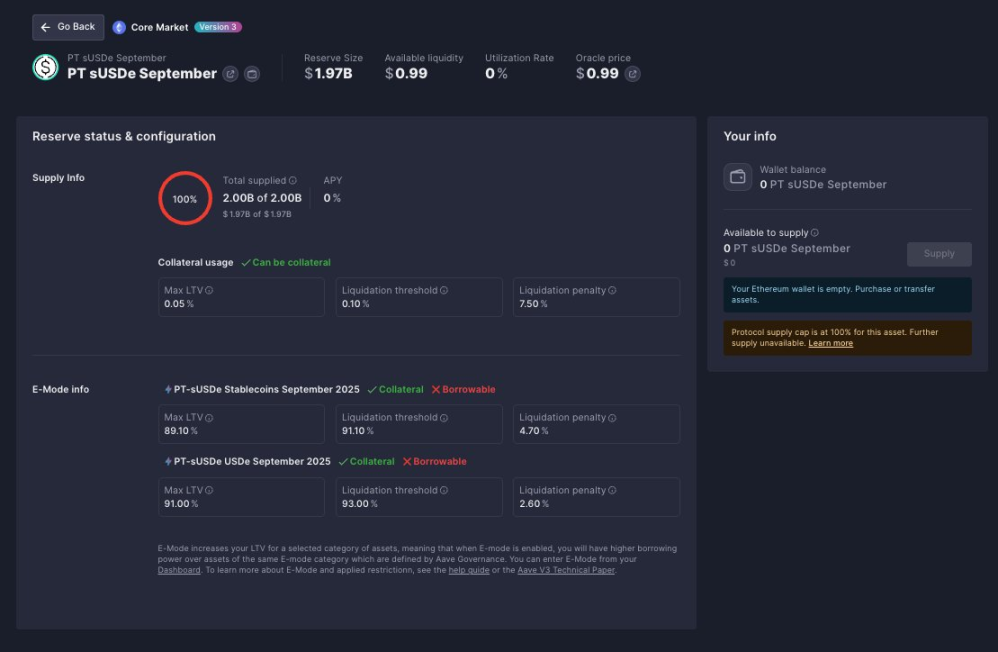
One of the three Ethena PT markets on AAVE reached a cap of $2 billion
In June of this year, the scale of this asset combination was $1.3 billion, and just months later, it has soared to over $3.3 billion—accounting for more than 2% of the existing total TVL in DeFi, achieved through a single tool. And this is just the tip of the iceberg of DeFi's achievements over the past few years.

Overview of DeFi as of August 2025 - DeFillama
The current total TVL in DeFi stands at $150 billion, only 15% lower than the previous peak. While some may argue that the previous data was inflated due to the peak ETH price of nearly $4,800 and the massive growth of defunct stablecoins like UST, excluding these two variables, DeFi would undoubtedly surpass the levels of the last cycle. With the DeFi revival firmly established over the past few years, I believe DeFi is entering a new chapter.
The Renaissance Era Has Ended.
DeFi Baroque Period
In European history, the 15th to 16th centuries marked a period characterized by art, science, literature, and culture, classified as the Renaissance period of balance and clarity. This was followed by the Baroque period, characterized by grandeur and complexity in cultural arts, with artistic styles aimed at evoking awe, suspense, and depth.
This is precisely the direction of the current evolution of the DeFi market: the era of minimalism is in the past, and a strange, grand, and vibrant market is on the horizon.

“Girl with a Pearl Earring” - Also known as the Northern Mona Lisa
DeFi is innovating in specific categories across all fields, with its impact reaching every existing area—derivatives.
The nominal market size of traditional finance at $600 trillion is merely a marker of the scale of the derivatives field. For DeFi, derivatives are reshaping the sector, and many are asking: How is this achieved?
The following will introduce some pioneers leading the next iteration of the DeFi market.
Starting with Hyperliquid
Readers are familiar with Hyperliquid and its achievements, but some may not know its future plans and the unique tools built on Hyperliquid.
CoreWriter — Unified Execution Layer
Hyperliquid has a dual-state execution environment above the consensus layer: HyperCore and HyperEVM. HyperCore is the high-performance engine we know, supporting perpetual contracts and order book spot markets. HyperEVM is a completely different environment that hosts the smart contract layer of Hyperliquid. Both share state, but previously, HyperEVM smart contracts could only read HyperCore data. CoreWriter has completely changed this.
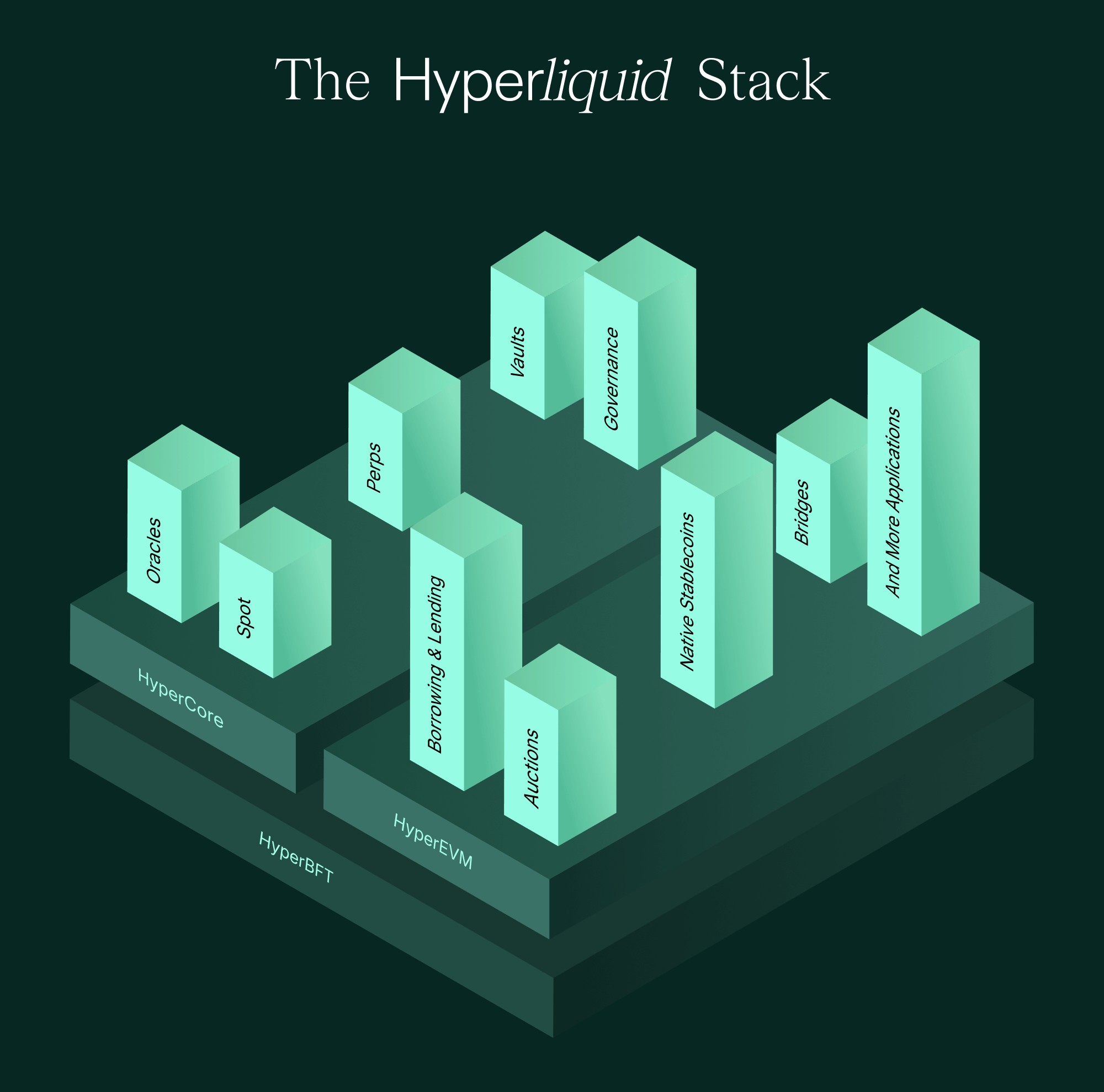
Both HyperCore and HyperEVM are built on the HyperBFT consensus layer
This is the core innovation that distinguishes Hyperliquid from other chains. CoreWriter allows HyperEVM smart contracts not only to read HyperCore data but also to execute transaction instructions (including trade orders, staking, transfers, and vault management).
This opens the door for HyperEVM protocols to access the largest order book on-chain and its liquidity, creating an unprecedented unique DeFi mechanism.
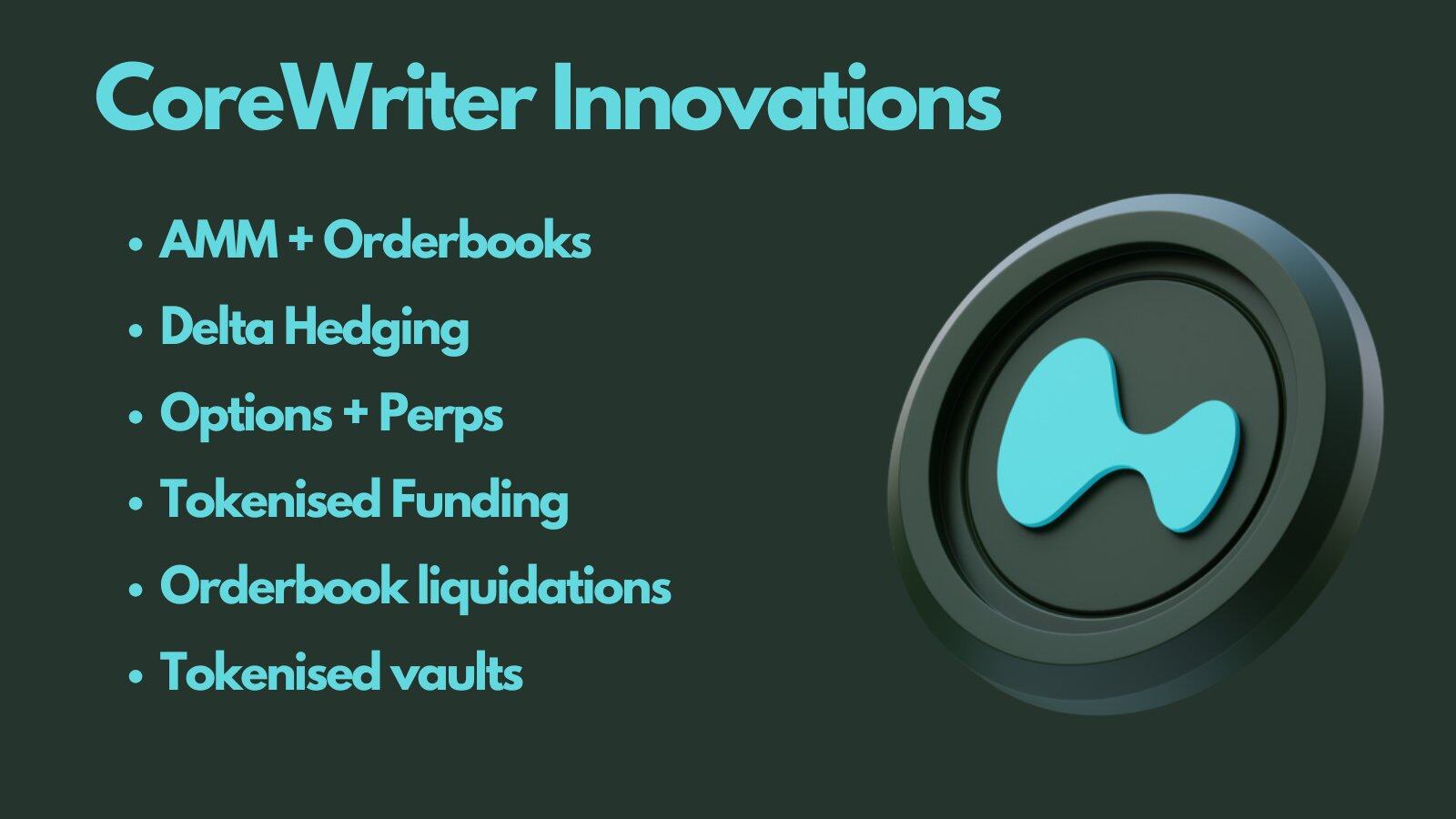
CoreWriter integration examples:
- DEXs utilize AMM and order book liquidity to enhance capital efficiency
- Creating complex delta hedging strategies through perpetual contracts
- When funding rates are favorable, CLAMM hedges impermanent loss through perpetual contracts
- Utilizing a combination strategy of options and perpetual contracts
- Tokenized funding rate strategies on HyperEVM
- Current liquidations are typically executed by AMMs, while CoreWriter allows money markets to utilize order book liquidations to enhance capital efficiency
- Non-custodial tokenized vaults including HLP
Kinetiq is one of the cases that has applied this technology. Kinetiq uses a decentralized validator staking mechanism through a scoring system, with all operations automatically completed via smart contracts between HyperEVM and HyperCore. This enhanced trust gives liquidity staking tokens (LST) like kHYPE a competitive edge.
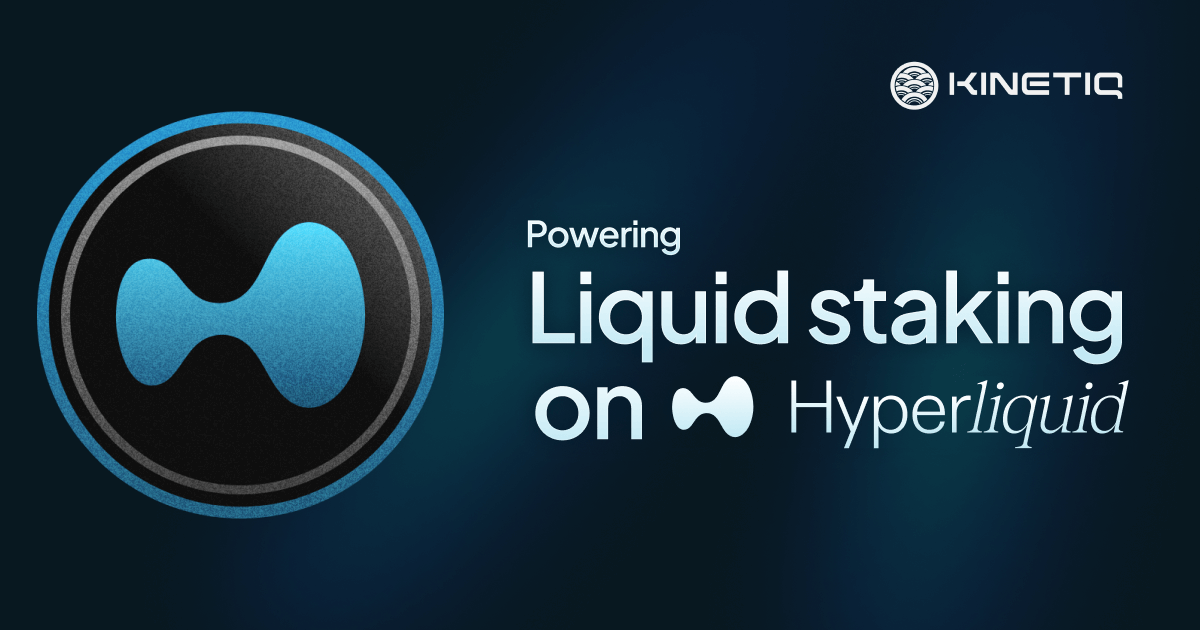
Kinetiq's TVL jumped to the top of HyperEVM applications within weeks of its mainnet launch
Another innovation is the introduction of a new type of collateral asset—the felix protocol team (unconfirmed) is considering this direction. Specifically: enabling tokenized perpetual positions to be used as collateral assets for lending in money markets, creating DeFi mining yield opportunities fully backed by derivatives.
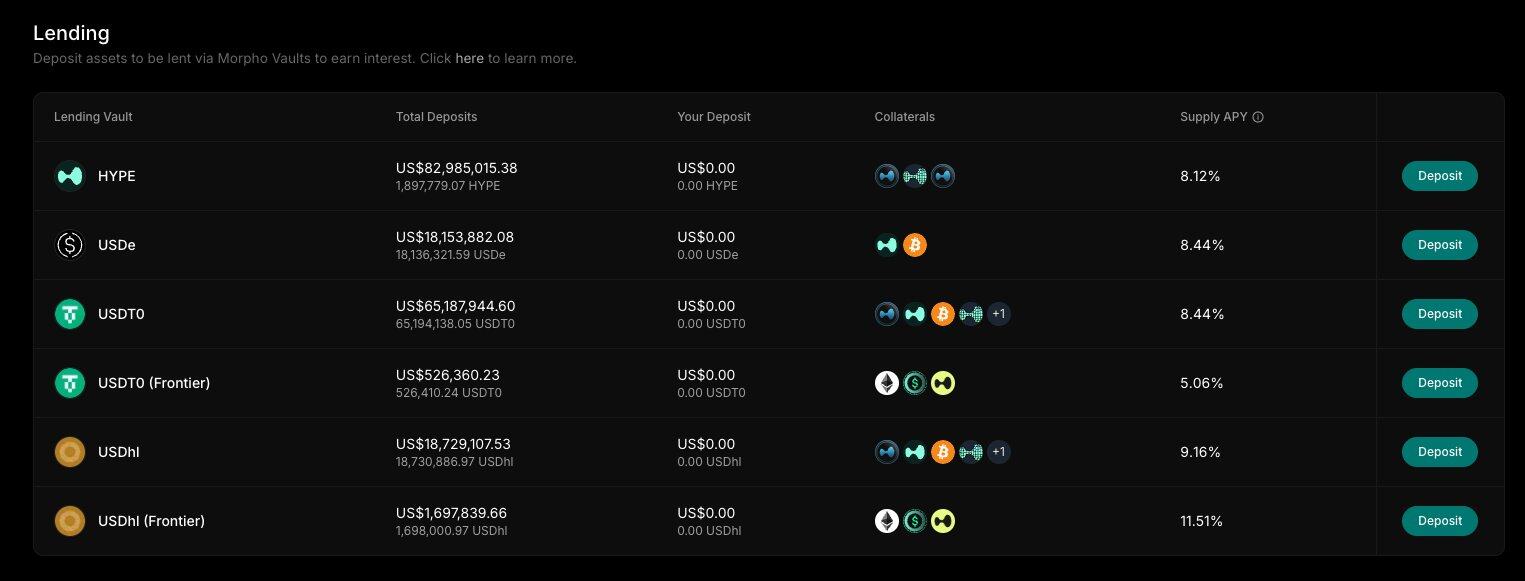
Felix's Morpho instance remains one of the most attractive money markets on HyperEVM
CoreWriter is just one of the innovations bringing DeFi into a more strange, complex, and composable Baroque era. Another key innovation from Hyperliquid is as follows:
HIP-3: The Uniswap Moment for Perpetual Contracts
Hyperliquid's next innovation is the creation of permissionless perpetual markets through HIP-3. With 1 million HYPE (approximately $38 million at the time of writing) and an oracle, new types of permissionless perpetual markets can be deployed on Hyperliquid. This opens up a new market—we can call it "Perpetual Contracts as a Service" (PaaS).
The true "Uniswap moment" for perpetual contracts has arrived: any perpetual market can be created, including:
- Stock perpetual contracts
- Index perpetual contracts
- Forex market perpetual contracts
- Commodity market perpetual contracts
- Pre-IPO market perpetual contracts
- Real estate perpetual contracts
- Special new markets
This also means that if the tokens issued by a protocol are not listed on HyperCore perpetual or CEX, trading pairs can now be created permissionlessly on the most commonly used chain markets. Traditional financial indices, including the S&P 500, are expected to go live quickly after launch, forming Hyperliquid's largest market. Stocks like $NVDA, $HOOD, and $TSLA can all be "perpetualized," creating new tools for these tech giants. Market issuers can also earn 50% of the trading fees from their tools.
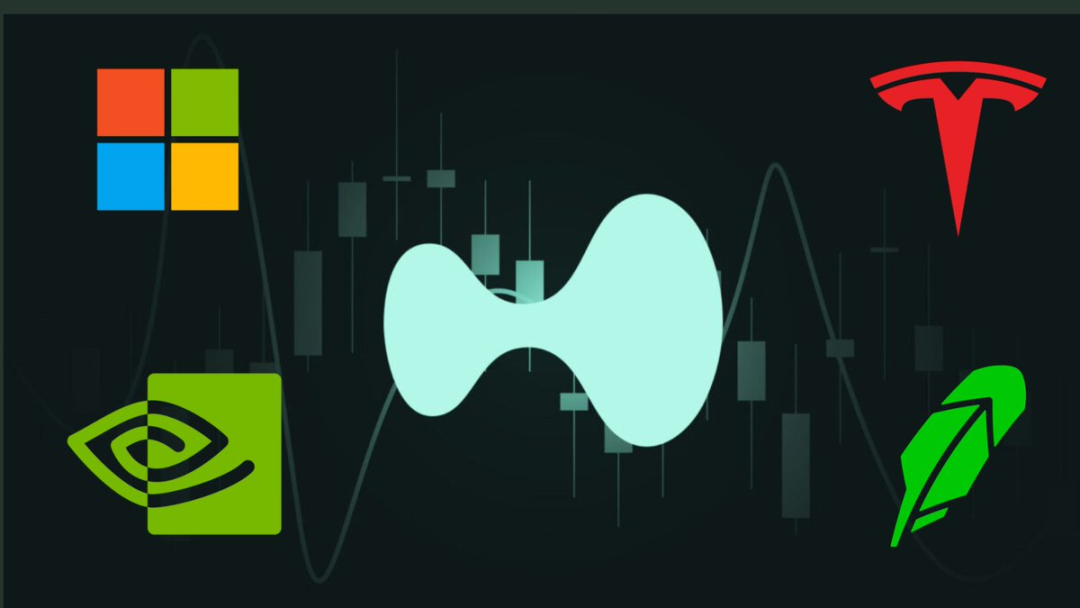
HIP-3 Opens the Door to New Markets Such as Stock Perpetual Contracts
As a DeFi user, certain niche markets are particularly attractive—especially those that tokenize perpetual positions for use in other HyperEVM applications via CoreWriter. Given time, we may witness bizarre markets such as real estate perpetuals, prediction market perpetuals, and even orange juice futures. However, attracting market makers to such markets may be challenging. Therefore, mainstream markets are likely to emerge first.
Ventuals is one of the first teams to publicly promote the creation of a Pre-IPO market based on HIP-3. They leverage industry-leading off-chain data sources to obtain accurate valuations, creating perpetual contracts around global leading private companies such as OpenAI, SpaceX, Stripe, and Anthropic.
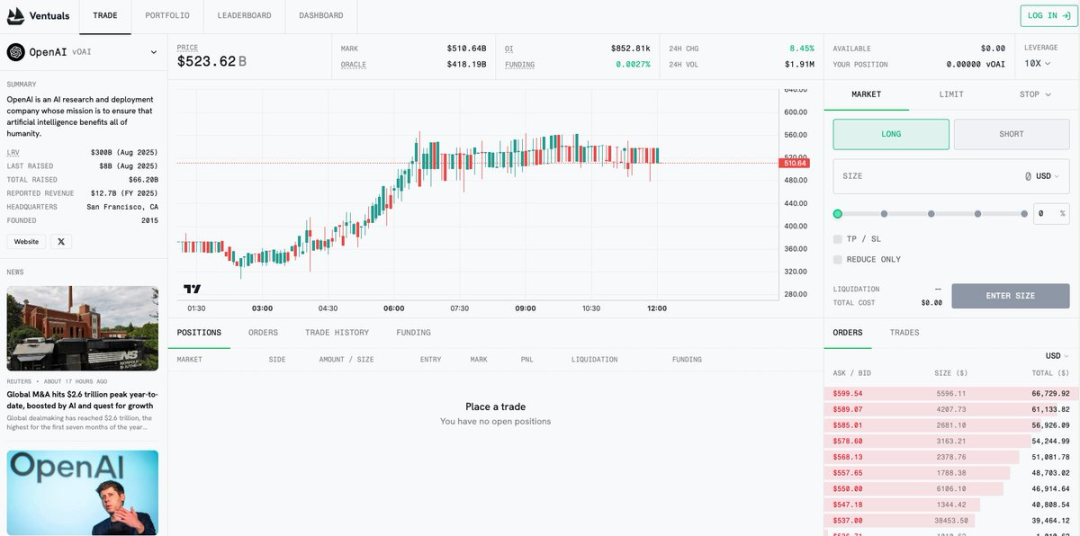
Ventuals Testnet Market Page
Such niche markets are driving DeFi innovation: one market, one oracle, and one dream.
Derivatives-Backed Stablecoins
Derivatives are also driving innovation in the stablecoin space—not through payment stablecoins (Tether and Circle operate independently), but through yield-bearing stablecoins.
This sector is growing rapidly, with USDe being the best example of unique high-yield stablecoin development. We are tired of the surge in quantity, offering only 5% mediocre annualized returns backed by government bonds.

Perpetual contracts have given rise to some of the best delta-neutral strategies in recent years, with Resolv being another high-yield delta-neutral stablecoin case. Its tiered system allows users to choose their yield levels based on risk preferences. Combined with protocols like Pendle, it can create more complex and unique tools—PT (Principal Token) particularly catches my attention, as it essentially creates fixed-rate income products backed by derivative yields.
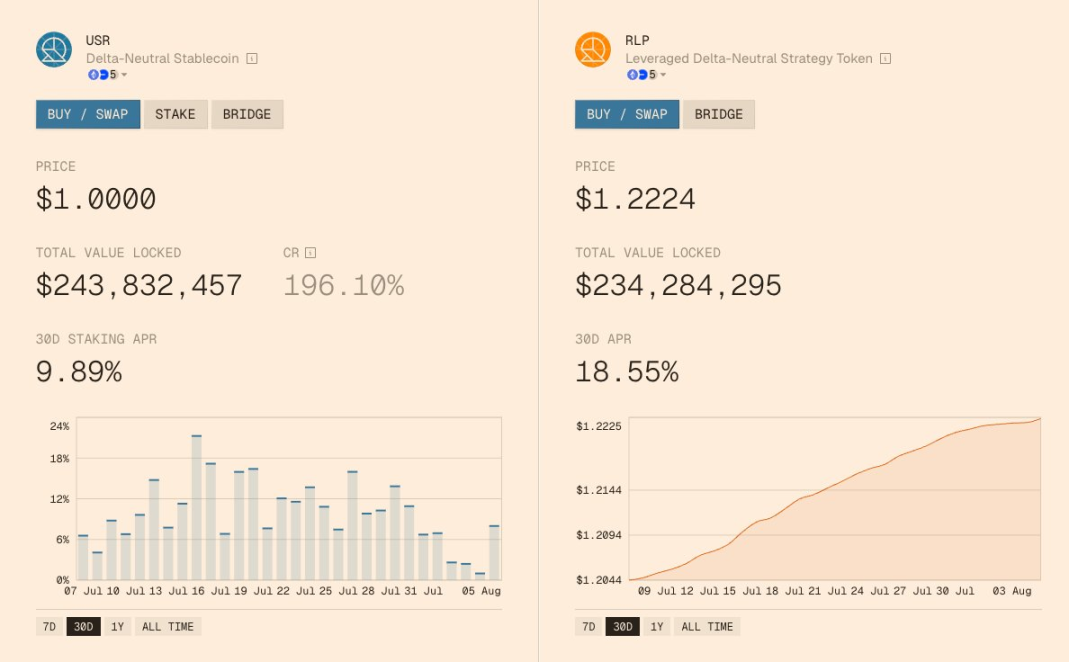
Liminal, built on Hyperliquid, offers funding rate strategy services in its application. Users can deposit stablecoins to automatically earn funding rate income. Although not stablecoins themselves, these derivative-backed products provide high yields priced in stablecoins that exceed real-world assets (RWAs) like government bonds.
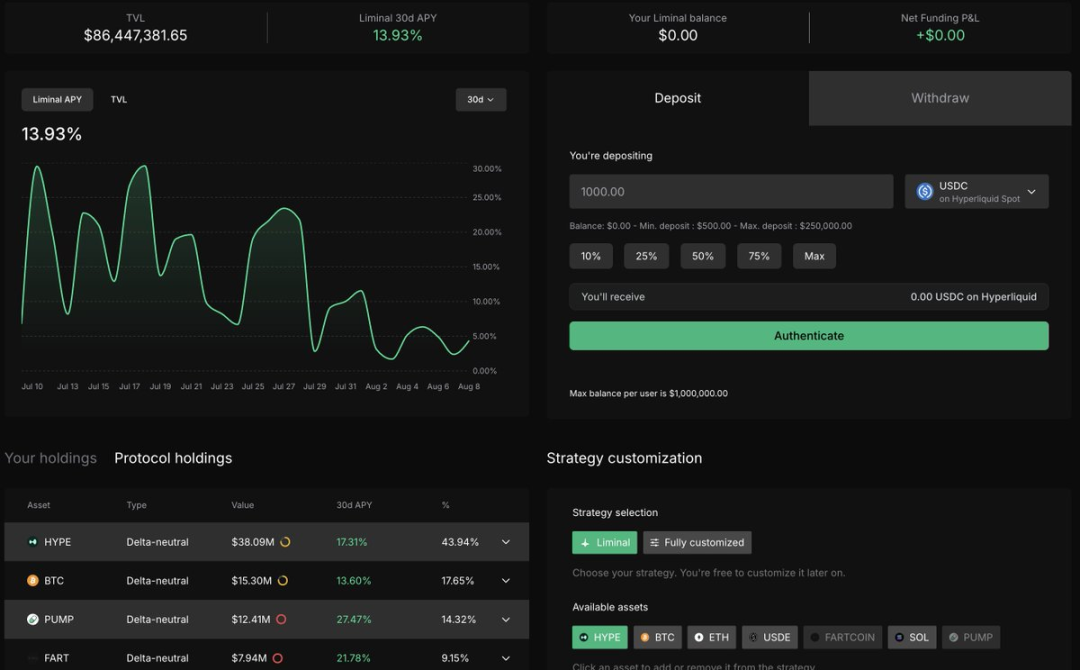
Stablecoins can sometimes be more imaginative: for example, Neutrl creates synthetic dollar products through OTC arbitrage and perpetual hedging, currently boasting a TVL of $40 million with an annualized return exceeding 30% (currently limited to private access).
How do they achieve this?
Neutrl acquires SAFTs (Simple Agreements for Future Tokens) and token trades from foundations and investors seeking liquidity, with most trades being at a significant discount to spot prices. Its advantage lies in obtaining trading opportunities through capital networks and partnerships, then hedging through perpetual contracts. Risk management includes diversified trades, backing from other stablecoins, additional buffers, and third-party custody.
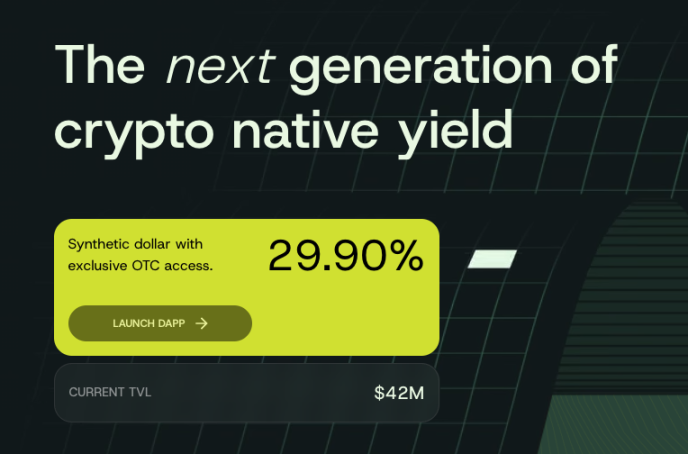
Such new markets allow users to access unprecedented high yields. OTC trading was once exclusive to a niche, but now ordinary on-chain users can benefit through Neutrl.
The forms of special stablecoins are diverse: GAIB's AI GPU derivatives, USD.AI's AI infrastructure debt-backed stablecoin, and Hyperbeat's tokenized stablecoin utilizing USDT's DeFi strategies (technically classified as stablecoins).
New Derivative Tools Based on Options
For a long time, discussions about poorly designed options products have been ongoing. That era has ended—on-chain options tools provide unique vehicles for expressing exposure: from trade-oriented products and high leverage to yield generation strategies.
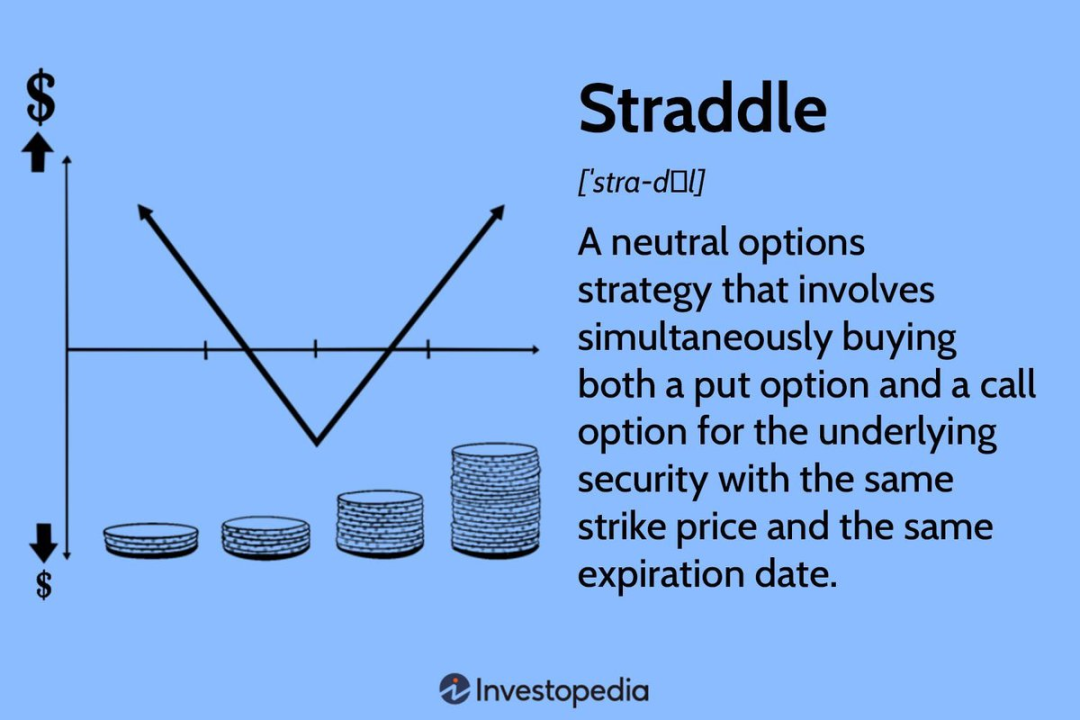
Straddle strategies essentially bet on volatility
Protocols have not fully opened the options world but have focused on creating high-quality products in niche areas before expanding. This has led to a series of options protocols offering unprecedented products on-chain.
Last week, tools like 0 dte (options expiring within 24 hours) saw record nominal trading volumes. Why are these tools useful? In short: the speculative space is astonishing.
- Ultra-high leverage (up to hundreds of times nominal leverage)
- Buying call/put options with no liquidation risk
Traders can trade 0 dte options markets for mainstream assets like BTC, ETH, SOL, and HYPE through the IVX protocol. These are among the best leverage tools currently available in the market, including the highest leverage products for assets like HYPE.
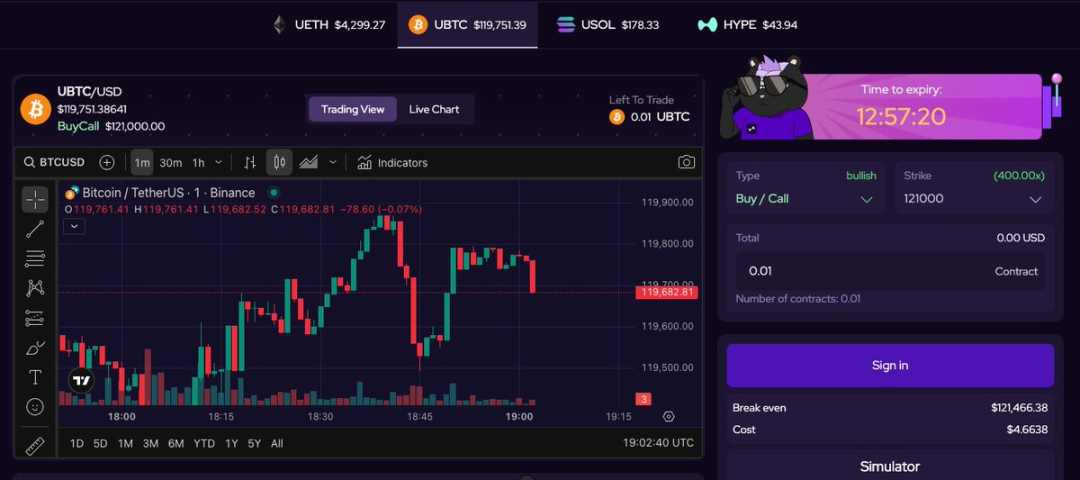
BTC 400x leverage with no liquidation and no funding rate
What excites me is that each protocol focuses on its own track: Rysk Finance also focuses on options yield strategies (covered call options), again pushing DeFi innovation through derivatives. While there have been options yield products, the current applications have achieved a qualitative leap in user experience and sustainable mechanisms.
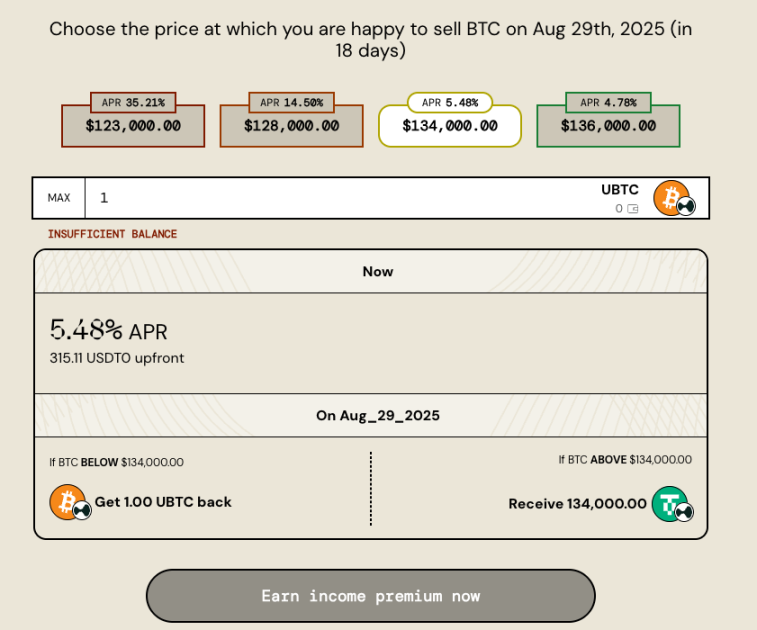
Gamma Swap's yield tokens are a newer product, creating unique derivatives on top of AMMs. Its new yield tokens symbolize the paradigm of derivatives in the new Baroque era of DeFi: utilizing borrowed Uni V3 positions, yield tokens have a similar underlying exposure to spot assets and are not affected by impermanent loss from AMM LP tokens.
These tools are about to unleash composability: through cross-application integration (such as listing on Euler or Morpho money markets) and the inevitable Pendle listing, we will have a brilliant and unique vehicle for expressing ETH exposure.
Fixed-rate single-asset AMM V3 liquidity pools yield ETH collateral—indeed, the Renaissance has ended…
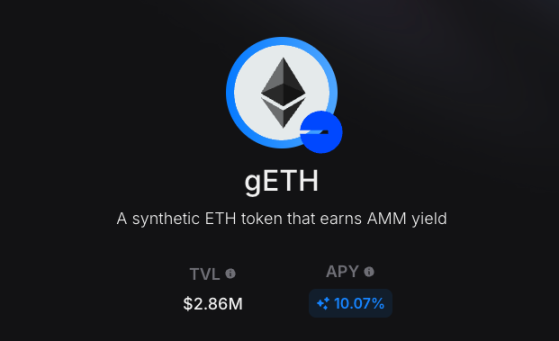
Options come in various forms: I'm also looking forward to Time Swap's V3—its introduction of time-bound tokens provides extensive functionality for YT/PT (yield tokens/principal tokens) through the tokenization of time periods. This has multiple advantages over the current yield tokenization systems: enhancing capital efficiency, reducing fragmentation, and increasing flexibility in yield trading.
Impermanent Loss Terminators
Regarding new tools, the next innovation in DeFi on AMMs comes from Yield Basis—transforming crypto assets into productive yield-generating tools through unique leveraged hedging.
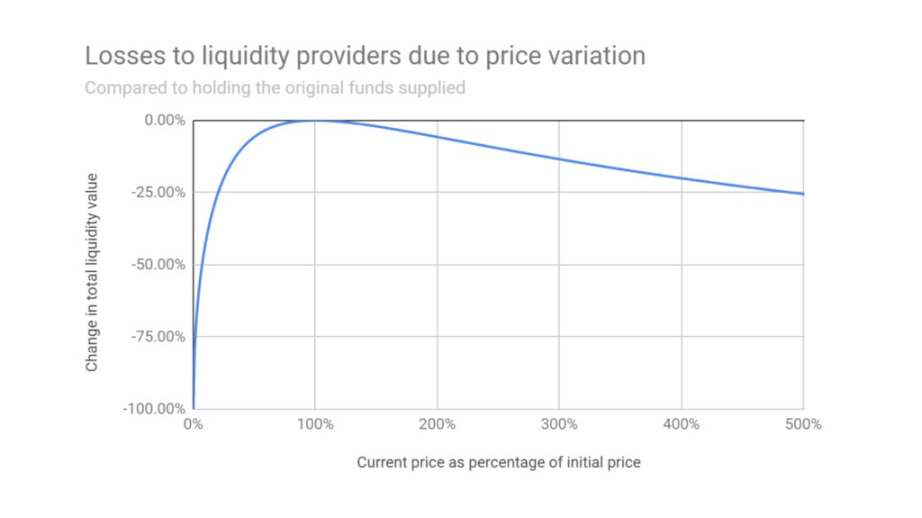
Impermanent loss is an inherent characteristic of the AMM mechanism
In a traditional AMM, if you provide $10,000 wBTC and $10,000 USDC, when the BTC price doubles, the final asset will not double (because the position grows according to the xy=k formula based on the square root of the BTC price ratio). However, if you collateralize wBTC to borrow $10,000 to form an LP position, and dynamically rebalance so that the debt ($10,000) always constitutes 50% of the collateral ($20,000), and automatically adjust the debt according to a 50% collateralization ratio when the BTC price changes, you can ensure that the total value of the position grows in proportion to the BTC price.
Yield Basis uniquely employs crvUSD to enhance utility, and more importantly, grants it control over interest rates.
The key point lies in the rebalancing mechanism: the re-leveraged AMM offers LP tokens to arbitrageurs at a slight discount, allowing arbitrageurs to add crvUSD to reduce debt and adjust position size. Similarly, when prices rise, the re-leveraged AMM offers crvUSD to LP token depositors at a premium, allowing arbitrageurs to increase their BTC holdings to restore a 2x leveraged position.
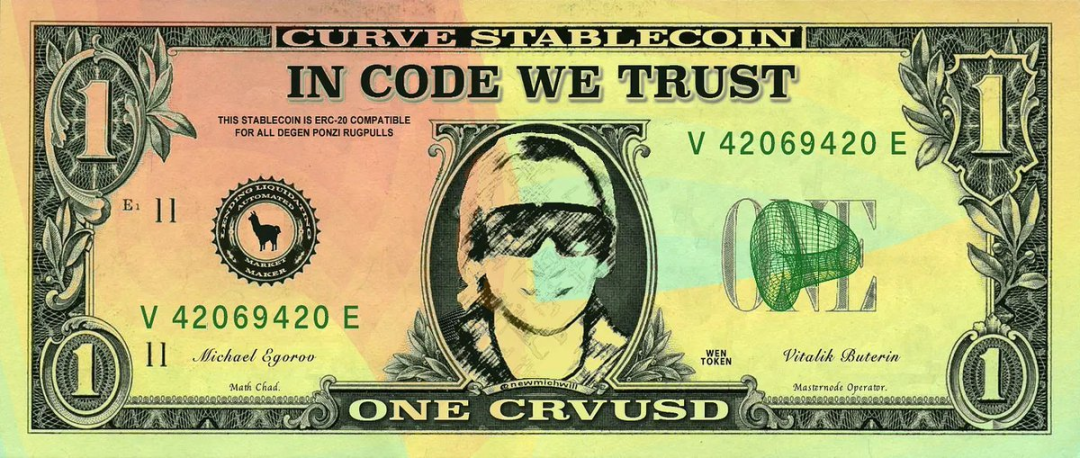
ybBTC brings much-needed innovative yield solutions for BTC, with simulations from Curve founder Michael Egorov indicating a bright future for ybBTC. For me, double-digit yields would be considered a success—though if deposits reach billions, the degree of yield dilution is questionable (it would then be a significant victory for Yield Basis, Curve Finance, and all on-chain BTC traders).
Funding Rate Products
Funding rates have become the most interesting tool for enhancing yields using delta-neutral positions. With the funding rates of altcoins soaring (especially high-demand assets like HYPE, FARTCOIN, PUMP, etc.), the basic trade of buying spot and shorting perpetuals has become one of the best opportunities of this cycle. The previously mentioned Ethena, Resolv, and even Liminal are all leveraging this point to provide yield tools.
Pendle's Boros is another innovator in this field, introducing a new type of derivative tool that allows trading of funding rate yields: going long on funding rates requires paying a fixed rate but receiving the market's floating funding rate, while the opposite allows for shorting.
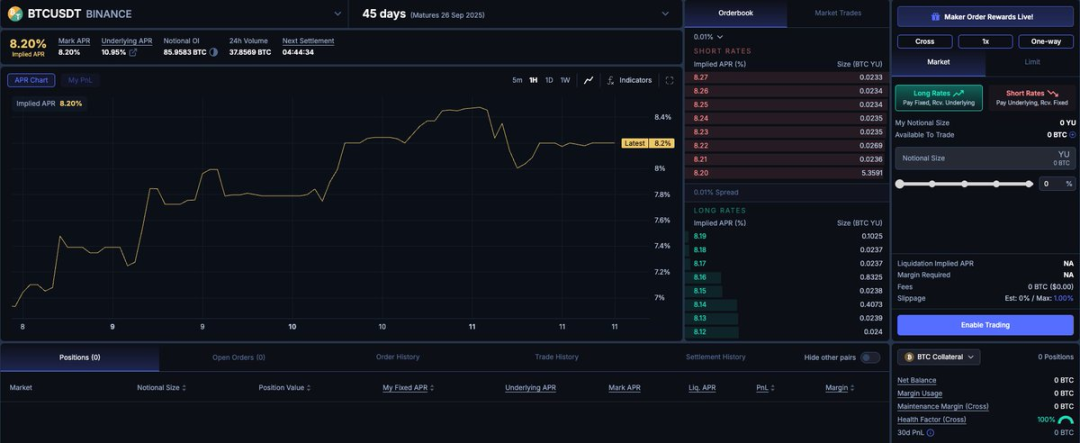
Boros opens up new possibilities: locking in fixed funding rates is significant for VCs, funds, traders, and protocols like Ethena/Resolv, as they can secure yields over a period of time. This will give rise to more composable strategies (including fixed-rate markets).
Recommended reading: Pendle's new product, good for ENA?
Where is the future?
The above is just a glimpse of some astonishing innovations present in today's DeFi world. The pace of development is unprecedented, with teams continuously learning and evolving from industry challenges to create truly powerful products. The vast majority of these are driven by derivatives, once again highlighting the characteristics of the new era of DeFi. Derivatives will elevate DeFi to new heights—first by breaking through the previous cycle's peak TVL and ultimately reaching trillions of dollars (seven times the current scale).
These protocols have only revealed the tip of the iceberg of their potential. In the next 6 to 12 months, they will stand alongside existing giants (AAVE, Uniswap, Lido, etc.) and push the industry to new heights.
As DeFi continues to evolve and mature, there are still many interesting markets to be developed: on-chain foreign exchange markets, Sharia-compliant DeFi, fixed-rate money markets, under-collateralization, privacy solutions, and more. These areas will transition from niche to mainstream, while existing fields (especially derivatives) will move from mainstream to dominate the entire financial market.
It is certain: DeFi has entered the Baroque era, and the future will only be more exciting.
免责声明:本文章仅代表作者个人观点,不代表本平台的立场和观点。本文章仅供信息分享,不构成对任何人的任何投资建议。用户与作者之间的任何争议,与本平台无关。如网页中刊载的文章或图片涉及侵权,请提供相关的权利证明和身份证明发送邮件到support@aicoin.com,本平台相关工作人员将会进行核查。




